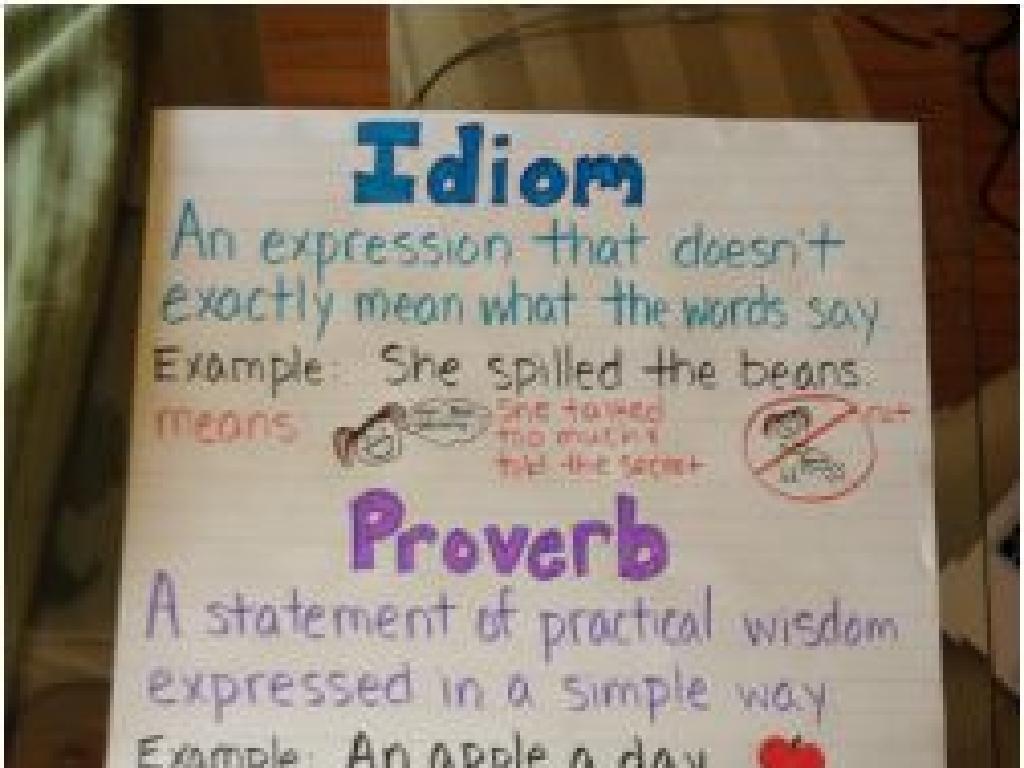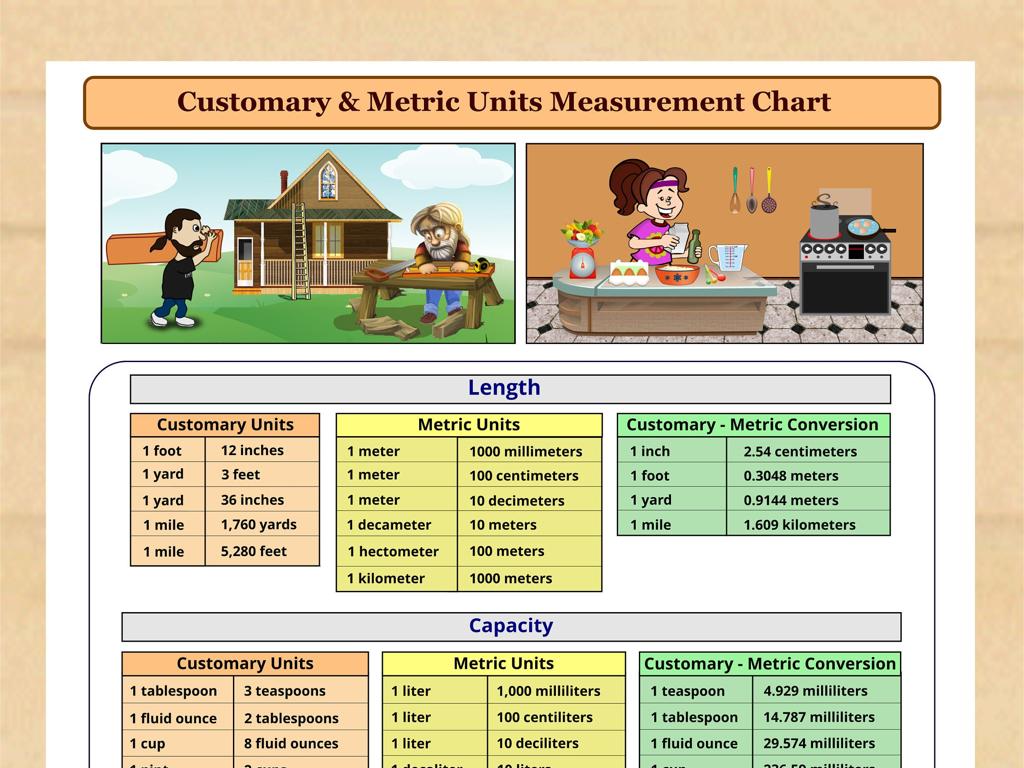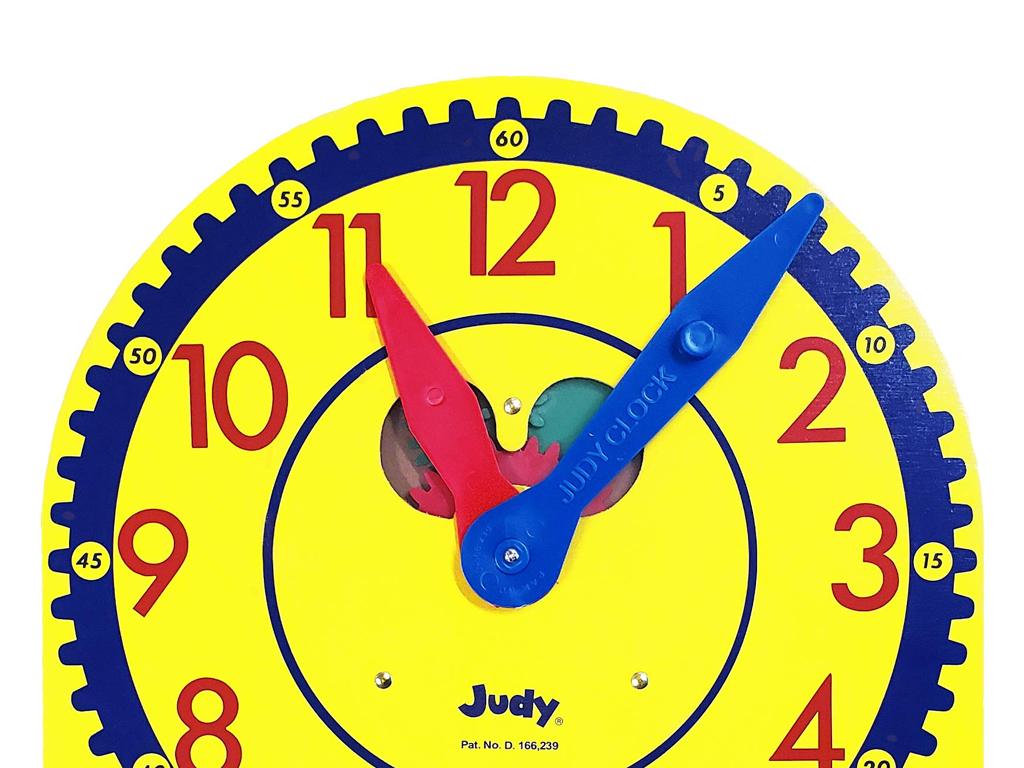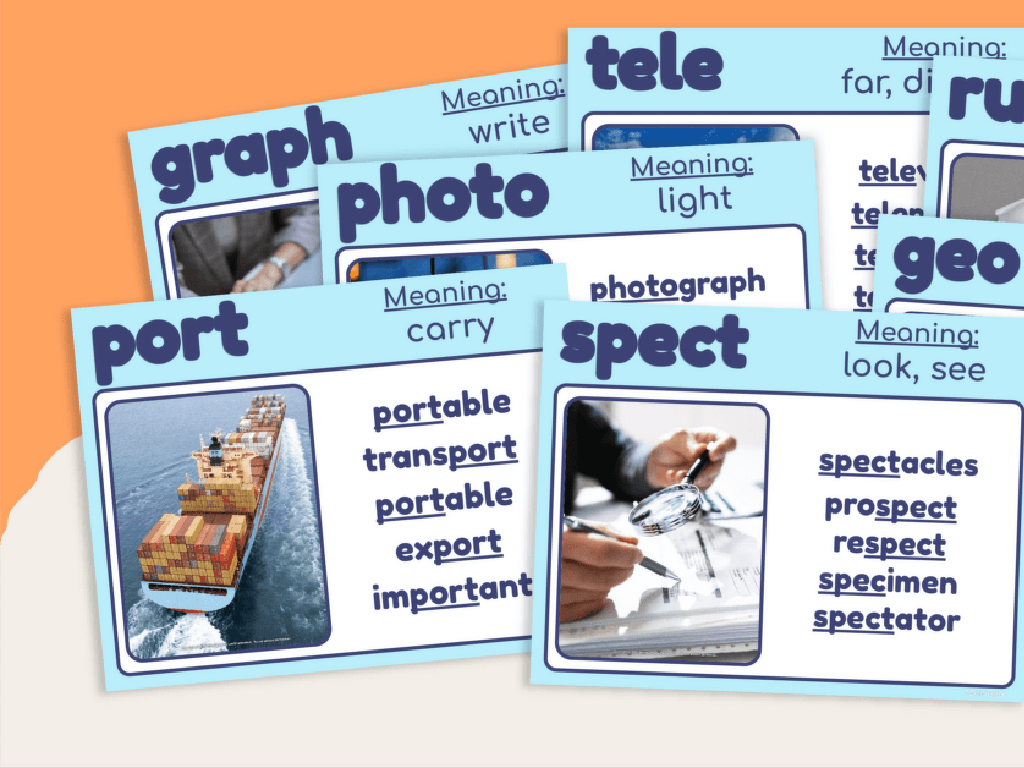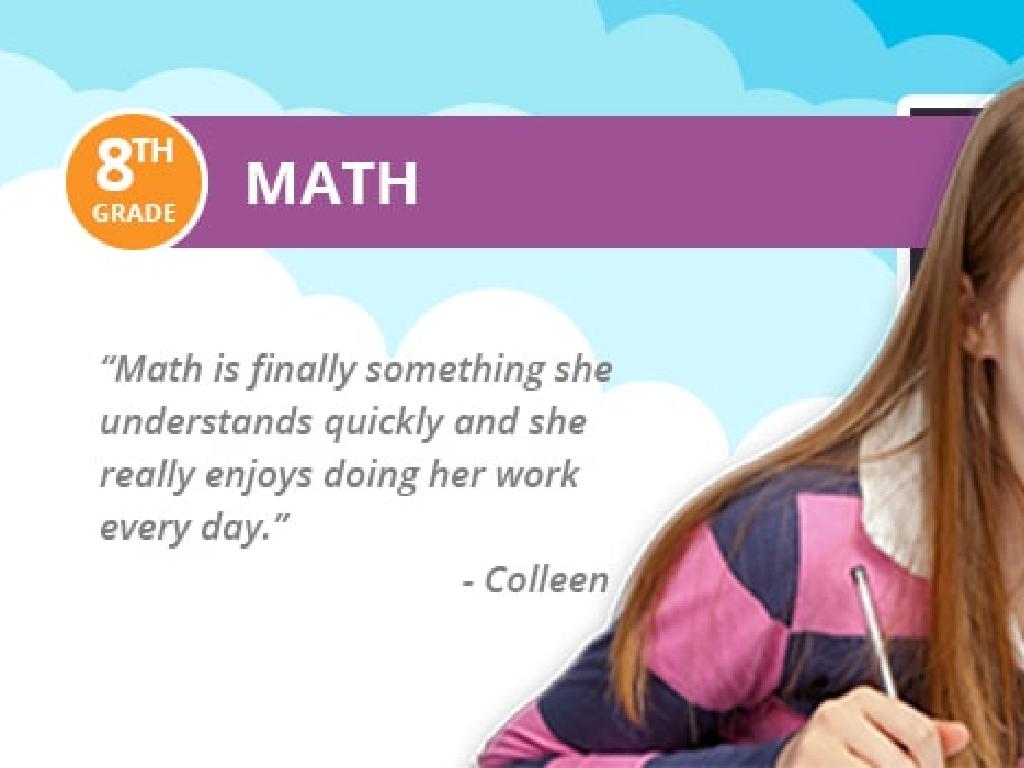Place Value
Subject: Math
Grade: Kindergarten
Topic: Counting Forward And Back To 20
Please LOG IN to download the presentation. Access is available to registered users only.
View More Content
Welcome to Place Value!
– Greetings, young mathematicians!
– Today’s focus: counting & place value
– We’ll count from 1 to 20 and back down
– Understanding numbers & their values
– Each number has a ‘place’ and a ‘value’
– Fun with numbers up to 20
– We’ll use games to learn about numbers
|
This slide introduces kindergarteners to the concept of place value within the context of counting to 20. Start by greeting the students warmly to create an inviting learning environment. Explain that counting is not just about reciting numbers; it’s about understanding each number’s position and worth. Use visual aids like number charts or blocks to demonstrate the idea of place value. Engage the students with interactive counting games where they can physically move objects to represent numbers, helping them grasp the concept of each number’s value and place in a sequence. The goal is to make learning about numbers a fun and tangible experience.
Understanding Place Value
– What is place value?
– It shows the value each number holds.
– Value in ones and tens
– Ones are single units, tens are groups of ten.
– Place value with objects
– Use items like blocks to count ones and tens.
– Practice with numbers 1-20
|
Place value is a fundamental concept in mathematics that helps students understand the value of each digit in a number based on its position. For Kindergarten, focus on ones and tens to keep it simple. Use physical objects like blocks or beads to visually demonstrate the concept of ones as single items and tens as a group of ten items. Encourage the children to practice counting with numbers from 1 to 20, grouping them into ones and tens where possible. This will help them grasp the idea of place value in a hands-on and engaging way. Prepare to have different sets of objects available for the students to use during the activity portion of the lesson.
Understanding Place Value: Counting to 20
– Counting from 1 to 20 together
– Every number has its own place
– Like how each letter has a spot in the alphabet
– Numbers after 9 begin a new place
– 10 is special because it starts the ‘tens’ place
– Recognizing the ‘tens’ place
– ‘Tens’ and ‘ones’ places help us count higher
|
This slide introduces the concept of place value in a simple and engaging way for Kindergarten students. Start by counting together with the class from 1 to 20 to ensure they are familiar with the number sequence. Emphasize the idea that each number has a unique position, similar to how each letter has a specific place in the alphabet. Highlight the transition from single digits to double digits at the number 10, where we start a new ‘tens’ place. Use visual aids like blocks or fingers to show the ‘ones’ and ‘tens’ places, reinforcing the concept that these places help us count higher and understand the value of numbers in different positions. Encourage the students to practice counting and to recognize the pattern that emerges as we move from 9 to 10 and beyond.
Understanding Ones and Tens
– Ones are single items
– Like 1 apple, 1 ball, or 1 crayon
– Tens are bundles of 10 ones
– 10 ones grouped together is a ten
– Counting ones to make a ten
– Let’s count: 1, 2, 3… up to 10
– Recognizing groups of ten
– A group of ten blocks is a ‘ten’
|
This slide introduces the concept of place value, starting with the ones and tens. Ones represent individual units, which can be anything that is singular, such as a toy or a cookie. Tens are essentially groups of ten ones. Use physical objects like blocks or counters to help students visualize the grouping of ones into tens. Encourage the children to count aloud from 1 to 10, touching each object as they go, to reinforce the concept of accumulation towards a ten. This tactile and visual approach aids in solidifying their understanding of basic place value, which is foundational for their future math skills.
Building Numbers with Blocks
– Use blocks to create numbers
– Each block represents one unit
– Group 10 blocks for a ‘ten’
– Like stacking 10 single blocks to make a tower
– Understand tens and ones
– Practice with blocks to see how numbers form
|
This slide introduces the concept of place value to Kindergarten students using a hands-on approach with blocks. Each block represents a single unit, and students will learn that grouping ten of these units together creates a ‘ten’. This visual and tactile method helps them understand the foundational concept of tens and ones in our number system. Encourage the children to physically manipulate the blocks to form different numbers, reinforcing the idea that 10 single units can be combined to form a larger unit called a ‘ten’. This activity will set the stage for further place value exploration and understanding how numbers are built in a fun and engaging way.
Understanding Place Value
– Every number has places
– ‘Ones’ place is on the right
– Like the number 1 in 21
– ‘Tens’ place is on the left
– Like the number 2 in 21
– Practice with examples
– Use blocks or drawings to show 10s and 1s
|
This slide introduces the concept of place value, which is fundamental in understanding how numbers are structured. Emphasize that in a two-digit number, the rightmost digit is in the ‘ones’ place and represents how many single units we have. The digit to the left of the ones is in the ‘tens’ place and represents how many groups of ten we have. Use visual aids like blocks or drawings to help students count groups of ten and single units. For example, show them that the number 15 has 1 group of ten and 5 ones. Encourage students to practice with different numbers to solidify their understanding of place value.
Let’s Practice Counting!
– Count using fingers
– Each finger is one unit
– 10 fingers make a ‘ten’
– When all fingers are up, that’s 10!
– Understanding place value
– Place value helps us see numbers as groups of tens and ones
|
This slide is designed to introduce Kindergarten students to the concept of place value through a hands-on counting activity. By using their fingers, students can easily visualize counting units and understand the significance of the number 10 as a building block in our number system. The activity involves counting each finger as one unit, and when all fingers are counted, they have made a ‘ten’. This concrete representation helps them grasp the abstract concept of place value, which is foundational for understanding larger numbers. Encourage the students to count aloud together and use their fingers to represent numbers as they count. This will also help with their fine motor skills and number recognition.
Class Activity: Building Numbers with Blocks
– Build numbers using blocks
– Use ones and tens
– Ones are single blocks, tens are row of 10 blocks
– Show and tell with your creations
– Share what numbers you made with the class
– Understand place value
– Blocks help visualize the value of numbers
|
This activity is designed to help Kindergarten students grasp the concept of place value in a tangible way. Provide the students with blocks, ensuring there are enough for them to create various numbers. Explain that single blocks represent ones and a row of 10 blocks represents tens. Encourage them to build numbers and understand how many ones and tens are in each number they create. After building, students should present their numbers to the class, explaining the place value of ones and tens in their number. This will help them to verbalize their understanding and learn from their peers. Possible variations of the activity could include: building the highest number possible, finding the number of tens and ones in a given number, or even a friendly competition to see who can build a number the fastest while correctly identifying its place value.
Congratulations, Place Value Experts!
– Fantastic work on place value!
– Ones are single units
– Like 1 apple, 1 toy, 1 cookie
– Tens are groups of 10 ones
– 10 apples make a ‘ten’
– You know place value up to 20!
|
This slide is a celebration of the students’ understanding of place value. Reinforce the concept that ‘ones’ represent individual units, which they encounter in everyday life, such as a single apple or a toy. Explain that ‘tens’ are simply groups of ten ‘ones’ bundled together, making it easier to count larger quantities. Use physical props like blocks or counters to visually demonstrate the grouping of ones into tens. Encourage the children by acknowledging their new expertise in recognizing and working with numbers up to 20, setting a positive tone for their continued learning in mathematics.

